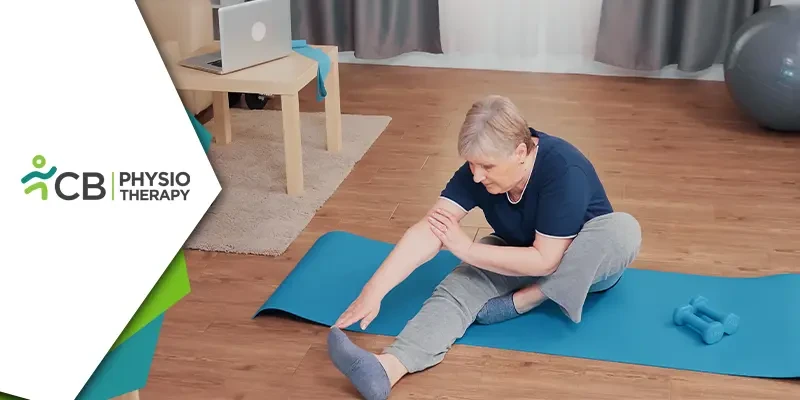Knee osteoarthritis is a prevalent and often debilitating condition that affects millions of people around the world. Osteoarthritis affects our body, as the joint cartilage and bone degenerate, and thus individuals experience pain, stiffness, and reduced mobility in the knee joint. While there is no cure for osteoarthritis, various treatments aim to alleviate symptoms and improve overall quality of life. Among these treatments, physiotherapy strength training has emerged as a promising approach. However, the debate between high and low-intensity strength training within the realm of physiotherapy has sparked considerable interest. This article delves into the benefits and considerations of high and low-intensity physiotherapy strength training for knee osteoarthritis, helping you make an informed choice about the approach that suits your needs best.
High-Intensity Physiotherapy Strength Training
High-intensity physiotherapy strength training involves engaging in exercises that require significant exertion and resistance. Although the idea of high-intensity training might seem daunting for those with knee osteoarthritis, recent research indicates that when tailored and supervised appropriately, it can offer substantial advantages.Benefits:
Enhanced Muscle Strength: High-intensity strength training stimulates muscle growth and development, which can help stabilize the knee joint. Strong muscles provide essential support to the joint, ultimately reducing stress on the affected area.1: Improved Joint Function: Strengthening the muscles around the knee joint can lead to better stability and mobility. This, in turn, contributes to improved overall joint function and reduced pain during daily activities.
2: Bone Health: High-intensity weight-bearing exercises can play a role in maintaining bone density, which is particularly crucial for individuals with osteoarthritis, as they may be at an increased risk of bone loss.
3: Metabolic Benefits: High-intensity training can accelerate metabolism and aid in weight management. Maintaining a healthy weight is essential for individuals with knee osteoarthritis, as excess body weight can exacerbate joint pain.
4: Guidance and Supervision: High-intensity training should always be undertaken under the supervision of a qualified physiotherapist. Correct form and appropriate progression are critical to avoid injuries.
5: Personalization: Not everyone with knee osteoarthritis is suited for high-intensity training. The severity of the condition, individual fitness level, and any underlying health issues must be taken into account.
6: Gradual Progression: A gradual increase in intensity and resistance is crucial to prevent overexertion and minimize the risk of injury.
Low-Intensity Physiotherapy Strength Training
Low-intensity physiotherapy strength training involves using lighter weights and focusing on higher repetitions. This approach emphasizes controlled movements and proper form, making it particularly suitable for beginners in strength training or those with more advanced osteoarthritis.Benefits:
1: Joint-Friendly: Low-intensity training places minimal stress on the joints, offering a gentle and safe starting point for individuals with knee osteoarthritis. It aids in building strength without causing pain or discomfort.2: Improved Muscle Endurance: While high-intensity training primarily targets muscle growth, low-intensity training enhances muscle endurance. This can contribute to better joint stability and the ability to engage in prolonged activity without excessive fatigue.
3: Pain Management: The gentle nature of low-intensity training can help alleviate pain and stiffness, leading to an improved range of motion and a better overall quality of life.
4: Suitability for Diverse Fitness Levels: Low-intensity strength training is accessible to a broader range of individuals, including those with limited mobility or other health concerns.
Considerations:
1: Progressive Overload: Even with low-intensity training, gradually increasing resistance over time is essential to continue reaping benefits and progress.2: Holistic Approach: Combining low-intensity strength training with other physiotherapy exercises, such as flexibility and cardiovascular activities, offers a comprehensive strategy for managing knee osteoarthritis.
3: Patience: Results from low-intensity training may take longer to become apparent compared to high-intensity training. Consistency and patience are key to success.
Striking the Balance: Personalization is Paramount
The choice between high and low-intensity physiotherapy strength training hinges on individual factors. Seeking guidance from a qualified physiotherapist is essential to determine the most suitable approach. Often, a combination of both high and low-intensity training might be recommended, considering the person's unique condition, goals, and limitations.Physiotherapy strength training stands as a promising avenue for managing knee osteoarthritis by enhancing muscle strength, joint stability, and overall function. Both high and low-intensity approaches have their merits and considerations, emphasizing the importance of tailoring the training program to the individual's needs. Whether you're engaging in high-intensity resistance exercises or focusing on controlled repetitions, the key lies in starting gradually, being attuned to your body's signals, and working closely with physiotherapy professionals to ensure a safe and effective journey toward improved joint health. Remember, the journey to relief from knee osteoarthritis is a personalized one, and finding the right equilibrium between high and low-intensity physiotherapy strength training can lead to a more active and fulfilling life.

